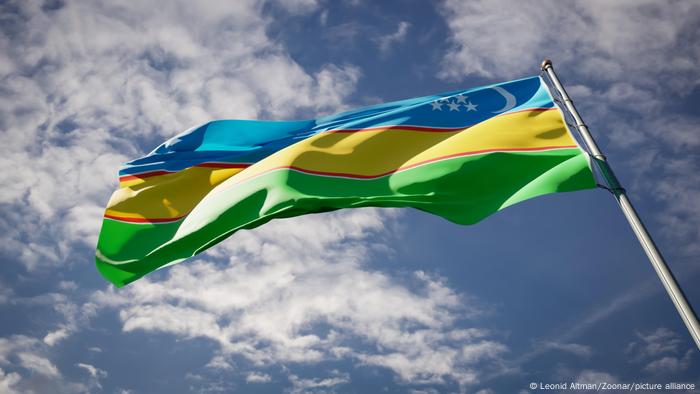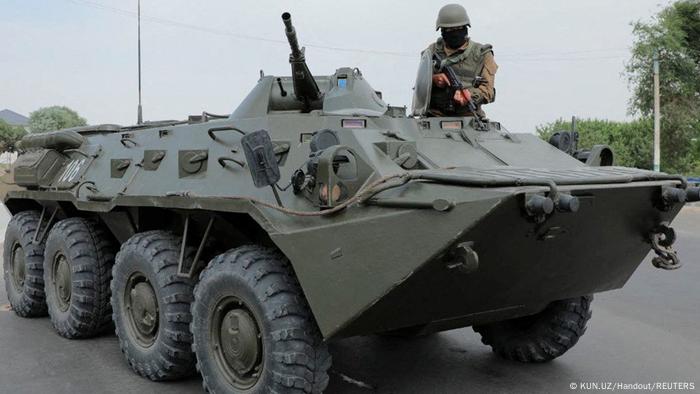For days, people in the autonomous republic of Karakalpakstan have been protesting that a constitutional change in Uzbekistan would take away their self-determination. What is behind it?

The Pride of Autonomous Republic: Karakalpakstan has its own national flag
In the meantime, the Uzbek President Shawkat Mirziyoyev has relented: Karakalpakstan should remain an autonomous republic. This was preceded by mass demonstrations in and around Karakalpakstan's capital, Nukus, after plans for a constitutional reform that no longer included the region's sovereign status became known.
According to official reports, the demonstrators tried to storm government buildings. “There were casualties among civilians as well as among the security forces,” President Mirsiyoyev said. At the same time he declared a four-week state of emergency in Karakalpakstan.
The autonomous republic in north-western Uzbekistan borders on Turkmenistan and Kazakhstan. Almost two million people live there, barely more than five percent of the 36 million inhabitants of Uzbekistan. In contrast, the area of sparsely populated Karakalpakstan covers almost 40 percent of Uzbekistan. This also includes a shoreline of the Aral Sea, which is dramatically drying up – the republic consists largely of desert areas and has hardly any fertile soil. The unemployment rate is high and Karakalpakstan is economically dependent on the rest of Uzbekistan.

The Karakalpaks, whose name means “black hat” and derives from a traditional black headgear, are a Central Asian Turkic people with their own language, which is similar to southern Kazakh. Roughly estimated, the population of the autonomous republic today consists of one third Karakalpaks, another third Uzbeks and a quarter Kazakhs; there are also other ethnic minorities.
The legacy of autonomy
Karakalpaks have settled in the area around the Amudarya River in Central Asia since the 18th century and belonged to the Soviet Union from 1920. The region first became an autonomous region and in 1932 it became the Karakalpak Autonomous Soviet Socialist Republic. From 1936, the Karakalpak ASSR was part of the Uzbek Soviet Socialist Republic, the only autonomous republic in Central Asia. In 1991, Karakalpakstan declared its independence from the Soviet Union and rejoined independent Uzbekistan a year later – on condition that its autonomy be preserved.
The crucial role of the referendum
In 1993, Karakalpakstan signed a 20-year agreement with the central government in Tashkent that guaranteed the autonomous republic the constitutional right to secede from Uzbekistan through a referendum. According to this agreement, after two decades, the parties should either extend the agreement or the Karakalpaks should hold a referendum on secession from Uzbekistan. But in 2013 there was no vote. While pro-independence movements such as the National Revival Party of Free Karakalpakstan exist, these separatists have little influence.

Uzbek security forces in Nukus: state of emergency in Karakalpakstan
The current draft of Uzbek constitutional reform had not mentioned the sovereign status of Karakalpakstan nor the right to secede from Uzbekistan, thus ending constitutional autonomy. The package of reforms also included extending the president's term in office from five to seven years and reducing Mirsiyoev's terms to zero – giving him 14 more years after his re-election last year; otherwise he would have to vacate his post in 2026.